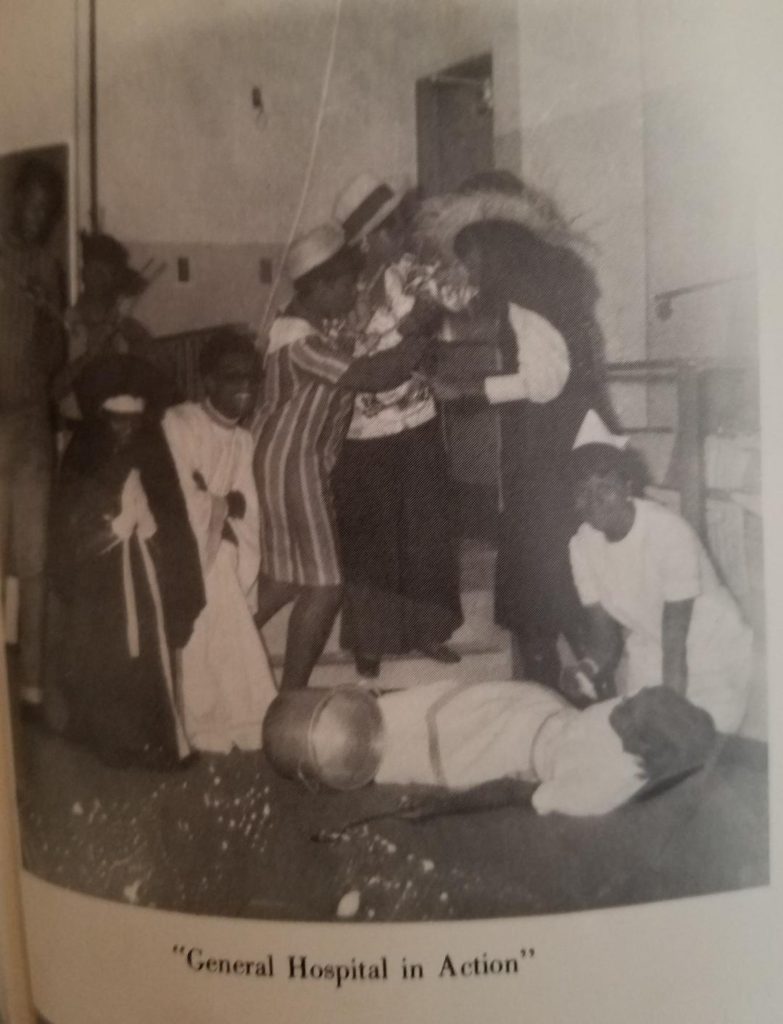In the fall, I turned sixteen years old. I looked forward to spending time with my friends and going on my first date. MaDear and Dad required that the boys I dated come into the house and they subjected them to a barrage of questions. A common question was “who ya people?” I wanted to sink into the floor. They explained to me that black people were separated as a result of slavery. Since families were scattered, it was not uncommon for parents to ask their dating children who their people were. If they mentioned a family name, they asked more questions since some names were common. They wanted to make sure relatives didn’t date or marry relatives. Our surname was not common; therefore, if they had the same surname we claimed each other as cousins.
I was in high school and reflected back to my grade school years. When I was in fifth grade, the students had to memorize a poem titled “If “by Rudyard Kipling. The purpose of learning and memorizing this poem was to help guide us through life. The words helped us understand how to live a successful and happy life despite challenges. Over the years, I recited the words to this poem as a reminder of life’s struggles. It was important to not be emotional or reactionary to verbal attacks from other people. People try to distract you and pull you into their mess. I adopted a personal saying “I leave people to their own mess.” It was up to me to stay focused to accomplish my goal of transitioning out of poverty.

My new school, Northside high school was located in North Memphis and attended by teenagers who lived in close proximity. We were all baby boomers, the result of the influx of children born after WWII. The classes were filled with a mixture of lower middle class and low income students. A large percentage of the students lived in one of the three nearby housing projects. We had our share of problems but we were eager to learn and determined to succeed. When I first started at the school, the principal and majority of the teachers were white. I estimate that less than five percent of the student body was white due to white flight. By the time I reached my senior year, this number had dwindled. The black assistant principal was promoted to principal. Each class was filled with students and teachers that seemed eager to help us learn. Over four hundred students were in my graduating class. In addition to core subjects, auto mechanics, drafting, printing, radio and television, electricity, woodworking, graphic arts and other subjects were taught. There were many extracurricular activities for students.
Read more in my memoir. It’s available for purchase in the book section of this blog.



My classmates and I had gained experience as community activists and was curious to how the public would respond to people who were attacked or injured while marching. We wanted to raise awareness. We decided to perform a skit involving a lady who was attacked while marching and act out the public’s response. Some students thought the public would turn their backs, some thought the public would pray or sing spiritual songs, some thought the public would just look and other’s thought the public wouldn’t care. Those of us interested in the medical fields thought the nurses and doctors would help. The nurse represented the medical team and was the only person providing care to the injured marcher in the skit. My decision was made; I would go to college and become a registered nurse!
Everyone must be willing to do something to make their life better. The desire to succeed must come from within. There are many people who are willing to help, you must listen, accept the help and take action. Be the person who makes it happen.
“When it comes to the future, there are three kinds of people: those who let it happen, those who make it happen, and those who wonder what happened.”- John M. Richardson, Jr.
References
April Sanders. “Women’s Rights Protests of the 1960s.” Wikipedia. Accessed January 12, 2020.
WDIA Memphis. Wikipedia. Accessed January 12, 2020.
Women in Congress. “A Changing of the Guard: Traditionalists, Feminists, and the New Face of Women in Congress, 1955-1976.” Wikipedia. Accessed January 12, 2020.
